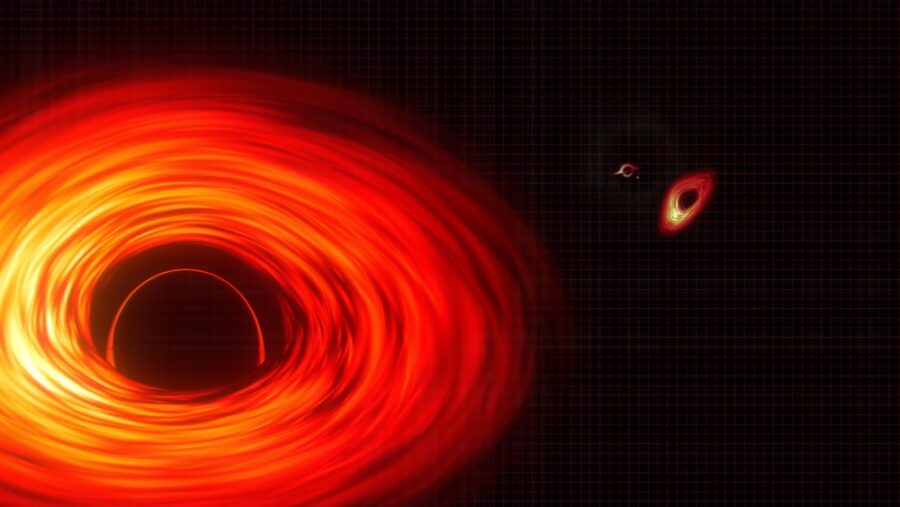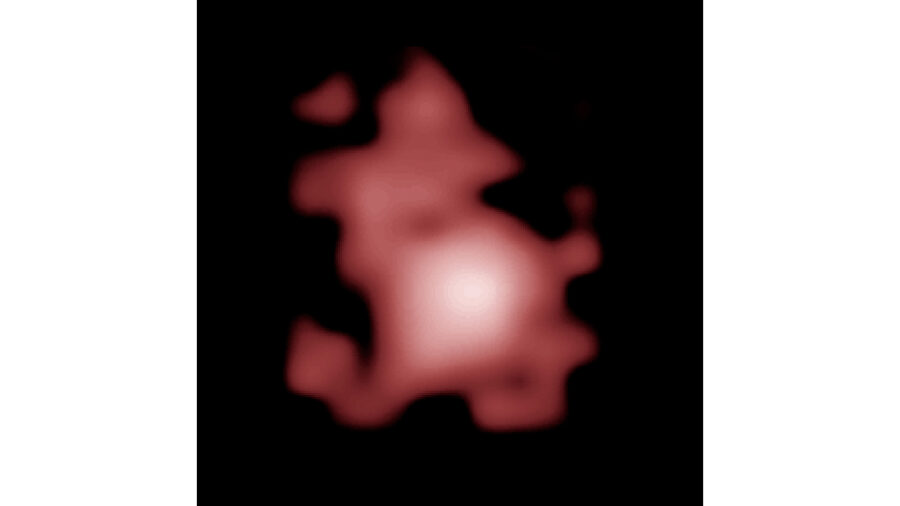Dawn Of Time Black Hole Observed

As science evolves, it increasingly resembles science fiction. For evidence, look no further than a recent, awe-inspiring discovery stretching the bounds of our understanding of the early universe: scientists at the University of Cambridge observed the most ancient black hole ever detected, dating back to a mere 400 million years after the Big Bang. In other words, it emerges from the dawn of time itself.
The astrophysicist leading the historical study, Roberto Maiolino, is primarily to thank for introducing humanity to the oldest black hole ever discovered. His team detected light from the black holes’ host galaxy, GN-z11.
Interestingly and perhaps unsurprisingly, this galaxy was previously pegged as the oldest observable galaxy in the universe. Its light traveled a staggering 13.4 billion years to reach us.
Gazing through the JWST, the Cambridge scientists saw something fascinating: an accretion disk eclipsing the galaxy’s light itself, decorated with light and ablaze with gravity and friction.
We can thank the super high-tech Hubble Space Telescope for that latter discovery. Excitingly, recent findings via the James Webb Space Telescope (JWST) encountered a galaxy surpassing GN-z11’s record-breaking age. It was this same telescope, the JWST, that led experts to the black hole from the dawn of time.
Additionally, JWST provided unprecedented insight and built upon Hubble’s discoveries to facilitate Maiolino and his team’s study of GN-z11 in incredible detail.

How did the scientists hit upon this ancient black hole?
By looking for and identifying signs of accretion—the fascinating, slightly horror-sci-fi-esque process in which black holes devour matter. Generally, an in-depth analysis of the light spectrum emanating from a galaxy reveals the signatures of accretion.
The black hole feeds rapidly and it will probably extinguish the star-forming potential of its host galaxy, GN-z11.
Gazing through the JWST, the Cambridge scientists saw something fascinating: an accretion disk eclipsing the galaxy’s light itself, decorated with light and ablaze with gravity and friction.
In fact, it is the black hole from the dawn of time and its accretion disk that illuminates GN-z11, not the galaxy’s light.
Thus, the black hole originating in the universe’s early days would appear no mere passive observer but indeed an active force shaping its surrounding environment. The black hole feeds rapidly and it will probably extinguish the star-forming potential of its host galaxy, GN-z11.
At 1.6 million times the mass of the Sun, it defies the conventional understanding that black holes in the early universe only formed from the remains of giant stars.
How does this happen? The black hole releases powerful nuclear winds (band name potential?) that obliterate the galaxy’s star-forging gas. In its wake, a quiescent, star-scarce object develops.
The size of the black hole from the dawn of time is also worth nothing. At 1.6 million times the mass of the Sun, it defies the conventional understanding that black holes in the early universe only formed from the remains of giant stars. Instead, the discovery lends credence to the theory that black holes in the early universe stemmed directly from the gravitational collapse of vast clumps of matter.
GN-z11 formed during the Epoch of Reionization, a pivotal era in cosmic history that the black hole, and galaxy containing it, shed light on. During the Epoch, the universe shifted from opaque to transparent, permitting light to travel freely. Gn-z11 suggests black holes from the dawn of time might have been crucial to this reionization process, lending the necessary ionizing radiation.
The Cambridge study challenges our understanding of black hole formation and suggests that early galaxies, like GN-z11, could have played a more significant role in the universe’s evolution than previously thought. Maiolino’s team and their findings may resolve longstanding tensions between existing models and simulations of the early universe.
Source: Nature












